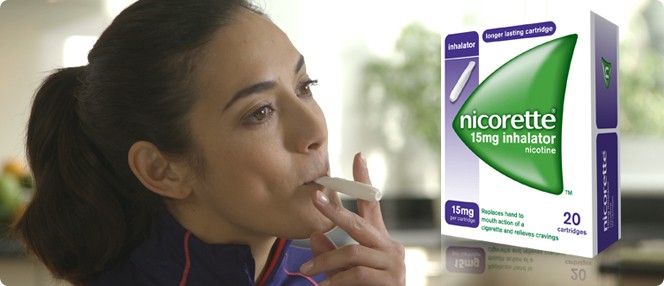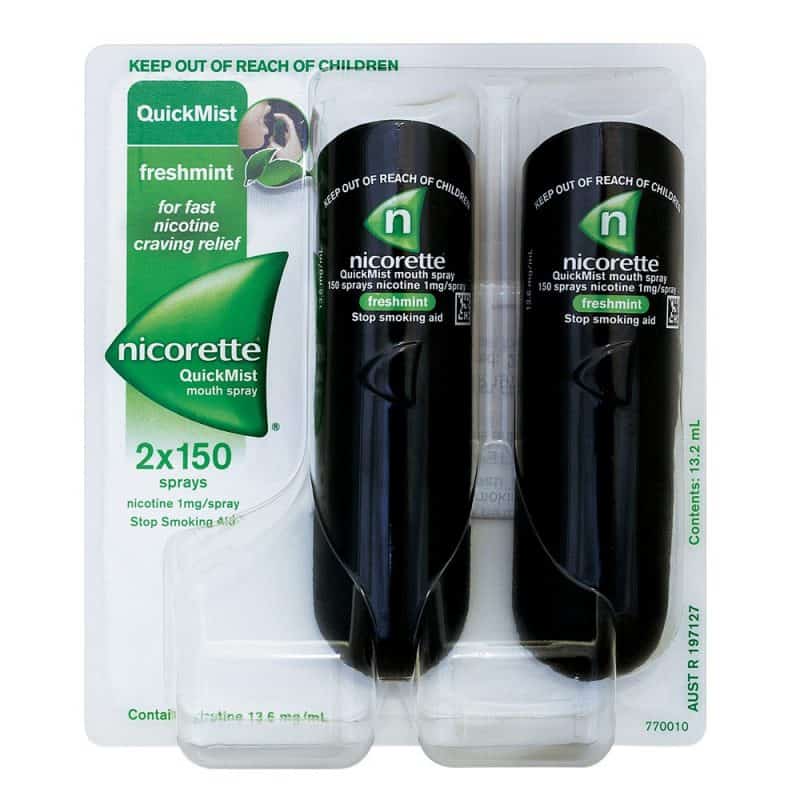DISCLAIMER: THIS WEBSITE DOES NOT PROVIDE MEDICAL ADVICE
The information, including but not limited to, text, graphics, images and other material contained on this website are for informational purposes only. The purpose of this article is to promote broad consumer understanding and knowledge of the various alternatives to smoking tobacco. It is not intended to be a substitute for professional medical advice, diagnosis or treatment. Always seek the advice of your physician or other qualified health care provider with any questions you may have regarding a medical condition or treatment and before undertaking a new health care regimen, and never disregard professional medical advice or delay in seeking it because of something you have read in this article or on this website.

Are you sick and tired of smoking tobacco, but finding it difficult to give up?
Everyone has their reasons for wanting to quit smoking, but if there’s one thing that’s certain, it’s that quitting smoking isn’t always easy, especially if you’ve smoked for a number of years.
Since you’re reading this, the chances are that you’re searching for the best way to quit smoking for either yourself or a close loved one.
Fortunately, there are more smoking cessations than ever before that have helped millions of people across the globe give up.
To help improve your chances it will help you to be aware of all the different cessation methods available, understand how they all work as well as their pros and cons.
And this is exactly what we’re going to go over in this article…
ARE YOU SURE THAT YOU ARE READY TO KNOCK SMOKING ON THE HEAD?

If you’re finding it difficult to quit, you’re not alone, but it helps to plan out how you intend to do so and prepare yourself mentally.
You’ve probably heard the saying, ‘if you fail to plan, you plan to fail’.
In many instances, this is absolutely right.
According to the CDC, a number of adults stopped smoking cigarettes for at least one day in an attempt to give up for good.

Source: www.cdc.gov
This study also shows that 3 in 5 smokers intend to quit in the next 6 months, but only 2% of all quit attempts are successful.
That’s right – only a 2% success rate!
Mark Twain once said: “Giving up smoking is the easiest thing in the world. I know because I’ve done it thousands of times.”
If you’re anything like me, you can relate to what he’s saying.
The thing is, the cravings don’t get any less intense, you just find ways of dealing with them.
We’ve all been in a situation where we’ve been nagged to stop smoking, whether that is by a concerned spouse, a parent or a caring friend that wants you to be around for years to come.
I’m almost certain that the natural response to being told ‘you need to give that up’ is ‘yeah, I know I’m going to try soon’ or something along those lines.
We’ve all done it, and the chances are we have said that with the best intentions.
Some people have a much more personal reason to give up.
You may have been told by a doctor that they have to quit for health reasons, and some of you may want to give up because, like me, you have recently become a parent and would love to see your children grow up.
Whatever your reasons may be, it must be said that there is absolutely no point in attempting any of these methods if deep down in your mind you don’t actually want to quit.
NICOTINE REPLACEMENT THERAPY AND ‘ALTERNATIVE METHODS’

In the next section, we’re going to take a close look at 11 of the most successful methods used to give up smoking, which will be divided into two parts – nicotine replacement therapies (NRT’s) and ‘alternative methods’.
Nicotine replacement therapies are used by 72% of people that attempt to give up smoking, and it has been proven that using more than one method simultaneously gives you the best chance to kick your habit.
Interestingly enough, 67% of people resort to self-help methods to give up while prescription medications are used by 37%, and 17% of people attempting to give up smoking seek counselling.
An article commissioned by the Tobacco Addiction Group which reviewed 150 different tests on nicotine replacement therapies showed that the chances of quitting increased by 50%-70% when an NRT was used.
Whether you choose to try a nicotine replacement therapy, counselling from an expert, go cold turkey or anything else, we can’t hide behind the fact that each method will require the utmost will power, determination, and self-discipline.
So with that in mind, let’s dive in and check out the most successful methods used today to quit smoking…
1. NICOTINE GUM

There’s a really good chance that you’re already familiar with and have tried chewing gum at some point in your life.
Nicotine gum is simply a type of chewing gum that delivers nicotine to your body.
The gum is chewed for a short period and then held on the inside of your mouth between your cheek and teeth.
The gum works by releasing nicotine, the addictive chemical that is craved, which is then absorbed in your body. This then caters to your craving.
Does nicotine gum work effectively?
According to this study involving two controlled groups and a placebo, it was proven to have an effect when used, but there were still a lot of relapses.
There are also a lot of things that go against nicotine gum such as the taste and lack of sensation it has when compared to smoking.
PROS:
- Quick, easy relief from cigarette cravings
- Different flavor options
- A range of strengths available
CONS:
- You can become addicted to the gum
- It isn’t the same sensation as smoking a cigarette
- It doesn’t taste great
2. NICOTINE PATCHES

A nicotine patch is another commonly used NRT.
The patch is placed on the skin like a plaster, and this releases nicotine into your body through your skin.
They tend to come in a 16 hour option, or a 24 hour option.
It’s believed that they are effective in helping you stop smoking until you are in a situation where you would normally smoke, such as at the pub, or around your friends, family or work colleagues that still smoke.
A study at Hayes et al. using three controlled groups, a placebo, a blind group and an open active group shows that at 6 weeks 10.8% of the group who know they are using a patch have ceased their smoking habit completely.
This number is increased drastically after 6 months.
It’s worth knowing that nicotine patches are known to have side effects such as irritability, and if left on overnight they may cause abnormal or vivid dreams.
PROS:
- Discreet way of getting your nicotine fix
- Different strengths to suit you
- Helps stop the cravings from forming
CONS:
- Doesn’t work when you are in a situation where you would normally smoke
- Patches can cause a rash on your skin
- Can cause sleeping problems or vivid dreams
3. NICOTINE INHALER

A nicotine inhaler is a plastic cartridge with a mouthpiece that you use to inhale nicotine, similar to how you’d puff on a cigarette.
As you inhale, the nicotine turns into vapor, similar to an e-cigarette device and is absorbed through the mouth and throat.
Each cartridge that you buy has around 400 puffs worth and should last for about 20 minutes of smoking. This is
This is equivalent to around 4 cigarettes.
As many people will tell you, sometimes it’s more than just the nicotine you are addicted to, it’s the habit and action of smoking that gets you.
This device is designed to give you the same movement as when you are smoking a cigarette, which will make the inhaler more attractive for many of you than the gum and patches.
A study from the British Medical Journal concluded that using a nicotine inhaler may improve public health as much as any other NRT, and they also state that this type of nicotine consumption is far safer than using tobacco.
PROS:
- It’s the same action as smoking a cigarette
- Different strength cartridges available
- You’re in control of your nicotine intake
CONS:
- Could be seen as prolonging the habit of smoking
- Could make you think you may as well be smoking a cigarette
- Can’t be used overly discreetly, it’s pretty obvious you’re puffing on one of these
4. NICOTINE TABLETS

Soluble nicotine tablets, or microtabs as they are also known, are similar to nicotine gums inasmuch as they are fast acting to relieve the cravings for a cigarette.
They are far more discreet and some argue that they’re even simpler to use.
To use the tablet, you simply place one under your tongue, and leave to dissolve for about 20 minutes.
The beauty of these is that you are in control of your nicotine intake.
Each tablet is 2mg of nicotine, so if you need more, you take more.
If you weren’t an overly heavy smoker in the first place, you won’t need to take as many.
It’s as simple as that.
It is advised that no more than 30 are taken in a 24 hour period.
It’s also advised that you pair the nicotine tablets with a nicotine patch to greatly increase the likelihood of you being able to stop smoking, but we’d highly recommend that you discuss this with a medical professional first.
PROS:
- Discreet and easy to use
- You are in control of your intake
- Fast acting relief against the cravings for a cigarette
CONS:
- Can cause heartburn, mouth ulcers, and flatulence
- Can leave an unpleasant taste in your mouth
- Has been known to give a hot/burning sensation
5. LOZENGES

Similar to a microtab, a nicotine lozenge is a tablet-like disc that you put in your mouth and let dissolve.
It works by releasing nicotine slowly, which is absorbed in the mouth to deal with your pesky nicotine cravings.
As with the microtabs, the effect of a nicotine lozenge lasts after it has dissolved, although the cravings tend to be kept at bay longer using this NRT method.
Lozenges are a discreet way of dealing with your cravings.
It is instructed that you don’t chew it. Instead, you just leave it in your mouth and let it do its thing!
It is also advised that you do not eat or drink a morsel for 15 minutes prior to medicating.
In a study from 2009, 270 people split into two controlled groups, of which one group had a placebo.
They study found that there was a significant reduction in tobacco cravings when the 4mg lozenge was used.
PROS:
- Easy to use
- Quick acting relief against cigarette cravings
- Comes in a range of strengths to suit
CONS:
- Can cause mild dizziness, headaches, and sore throat
- in extreme cases, can cause heart palpitations
- Must be used semi-regularly to control cravings
6. NICOTINE SPRAYS

If you’re in the UK, you may remember an advert from Nicorette for their nicotine spray.
A rather suave-looking man was stuck in traffic, getting irate with his situation before reaching down for his spray, squirting it in his mouth then all of a sudden becoming nice and relaxed.
Well, as it is advertising, this was most probably exaggerated.
Even still, it has to be said that nicotine sprays are excellent in that type of situation.
It’s easy to use – you simply point the nozzle into your mouth, aiming at your cheek and press down on the top to release a small burst of nicotine infused liquid into your mouth.
This is then absorbed into your system in exactly the same way as the other oral nicotine replacement therapies.
It’s advised that you avoid swallowing for a few seconds after you spray as this will let the medication work its magic and give it a greater chance of being absorbed fully into your system.
Another study from the British Medical Journal concluded that nicotine sprays are more effective in controlling cravings than lozenges, with 50% of tested subjects noticing a reduction within 4 minutes.
PROS:
- Fast acting
- Easy to use
- Cost effective
CONS:
- Not exactly discreet
- Can leave a nasty aftertaste
- May be abused as a method
7. ELECTRONIC CIGARETTES

There are millions of people around the world that have used electronic cigarettes as a means to give up smoking.
However, as effective as vaping has been at helping millions of people give up smoking when compared to NRTs, vaping isn’t going to be the right solution for everyone.
Vaping is not currently endorsed by our NHS in the UK as a quit smoking aid, and while the NHS do state that electronic cigarettes are not risk free, they do accept that “…based on current evidence they [electronic cigarettes] carry a fraction of the risk of cigarettes.”
For me, this is as good a reason as any to take vaping as a smoking cessation seriously.
Research into how effective vaping is in helping people give up smoking and the long-term health effects is only in its infancy, yet recent studies have had some major breakthroughs that claim that vaping is far safer than smoking as well as much better for your health.
If you’re thinking of giving vaping a try, you can learn more about how you can give up with electronic cigarettes and the different types of vaping devices you can use to get you started.
In fact, we’ve written several guides that should help you on your journey, and we’ll be happy to help you with any questions if you wish to contact us.
PROS:
- Some devices do a great job of giving you the sensation of smoking a real cigarette
- Infinite amounts of customisation, from mods, to tanks to e-liquids
- More powerful than a nicotine inhaler
- Can reduce your nicotine intake by reducing the nicotine content in the e-liquid
CONS:
- Some of the more powerful devices do not mimic the experience as smoking a cigarette
- Can be a costly hobby
- While vaping has been proven to be 95% safer than smoking, there is still limited knowledge on long-term health effects of vaping
8. GOING COLD TURKEY

What exactly does it mean to ‘go cold turkey’?
Going ‘cold turkey’ is a term used to state that you have given up smoking with no substitute and without gradually reducing the number of cigarettes you smoke.
You just quit.
A Paper published in 2016 by Nicola Lindson-Hawley of the University of Oxford suggests that going cold turkey when attempting to give up smoking is the most proven method.
This may seem like the most difficult way of giving up for most of us; you’re not replacing the nicotine you are used to getting when you have a cigarette, I personally know a lot of people that have succeeded going cold turkey.
The chances are, if you give up by going cold turkey, you will remain a non-smoker for the rest of your life.
It may sound simple: just throw away your cigarettes, remove all temptation and carry on your life.
If only it was that easy.
If you’ve tried giving up before, the chances are you’ve tried this method and have most probably failed.
I know I did.
It’s not to say that you shouldn’t give it a try. Many people have the willpower to do it, and it can’t do too much harm to test yourself.
PROS:
- Instantly save money
- Higher chances of staying a permanent non-smoker
- No nasty side effects from medicinal ways of giving up smoking
CONS:
- Not the easiest way to give up
- You have nothing to ease the cravings when they come
- You may experience terrible mood swings
9. GRADUAL REDUCTION

If going cold turkey is out of the question for you, you could try to gradually reduce your cigarette intake instead.
For some of us, it will be much easier to go from 20 a day, to 15, to 10 etc. than going from 20 to 0.
This may help you cope with the cravings yet reduce the amount of nicotine you consume over a period of time.
If this method sounds like one you’d like to try, you may find it useful to set some targets and write them down.
You could even treat yourself every time you accomplish one of your targets. You’ll be surprised how effective doing this can be.
For instance, let’s say you want to be a non-smoker in 6 months. You could set yourself a target of reducing by 25% by month 1, a further 25% by month 2 and so on…
If you succeed, you could reward yourself by spending the money you’ve saved on something you’ve been eyeing up.
It has been scientifically proven that if you give yourself a financial reward when chasing a goal, you have a greater chance of achieving your ultimate goal.
PROS:
- You will find it easier to control the cravings when they come along
- You will not suffer from mood swings as much as giving up completely
- This is an easier method than giving up completely
CONS:
- You will still be smoking
- You won’t notice the money saving for a while
- It will take longer to give up
10. BEHAVIORAL THERAPIES

Cognitive behavior therapy, otherwise known as behavioral therapy uses the power of your mind to help you give up smoking.
It’s defined in the Oxford dictionary as “The treatment of neurotic symptoms by training the patient’s reactions to stimuli.”
It can be used to help give you a positive mindset when it comes to tackling your addiction by changing your outlook on the task, and it helps you to increase your own self-confidence.
Behavioral therapy also helps you to identify the triggers you subconsciously have to smoke and offers solutions on how to tackle them by doing something you wouldn’t normally do.
This includes teaching you how to deal with the stress and the urge to smoke, which is quite common among recent to mid-term quitters.
Cognitive behavior therapy is used in a myriad of different situations, from tackling a fear of snakes, to overcoming anxiety and has now been widely used as a way for people to give up smoking.
This research by Guichinez et al finds that Behavioral and cognitive therapies are useful techniques for the patient in optimizing and personalizing management, especially in the prevention of relapse.
However, CBT assessment is methodologically difficult and there are few studies evaluating CBT alone.
On the other hand, CBTs are effective in cases of anxiety, depression or co-addiction that are increasingly common in tobacco consultations.
PROS:
- Can alter your thinking making it easier to control cravings
- Proven to be helpful if you relapse
CONS:
- Can be time consuming
- Could take a while to alter the way your brain works
11. INDIVIDUAL COUNSELLING
Most people that have been through counselling will sing to its praises, but there is something about opening up to a complete stranger in confidence that many people don’t feel too comfortable doing.
Getting solid, proven advice from an expert is something that we would all do if our boiler broke, or if we wanted to work out how to fix our car, but when it comes to fixing our mind, it’s an often overlooked solution.
This study by Lancaster and Stead published by Wiley on behalf of The Cochrane Collaboration in 2008 shows that individual counselling to give up smoking is best for long-term smoking cessation.
There’s absolutely nothing wrong with seeking help from professionals. And if this is a viable option for you, I’d highly recommend at least giving it a go.
PROS:
- Proven to be an effective long-term solution
- You’re getting professional help and support
CONS:
- Could be costly
- Wrongly, counselling has a stigma attached to it
CONCLUSION
Now that I’ve outlined the best ways to quit smoking, the rest is totally down to you.
You may find that using multiple methods, such as nicotine tablets, nicotine patches and individual counselling will work better for you, or you may fancy your chances of going cold turkey.
Personally, I’ve tried a couple of these methods but nothing really worked until I opened my eyes to the world of vaping and electronic cigarettes – not only am I now a non-smoker, I have found myself a hobby that I thoroughly enjoy and I love trying to find the ideal combination of mod, tank and e-liquid that gives me the perfect vape.
That’s just me though.
Whatever you decide to do, try to stick with it, power through the cravings and the hardships that you will inevitably encounter.
Not only will you see health benefits, you reduce your risk of many life-threatening illnesses and you may even find that you’re able to save enough money to treat yourself to something nice with the money you’ve saved.
Good luck with whatever you decide to do, and go for it!
Which of these methods do you think is the most effective way to quit smoking?

